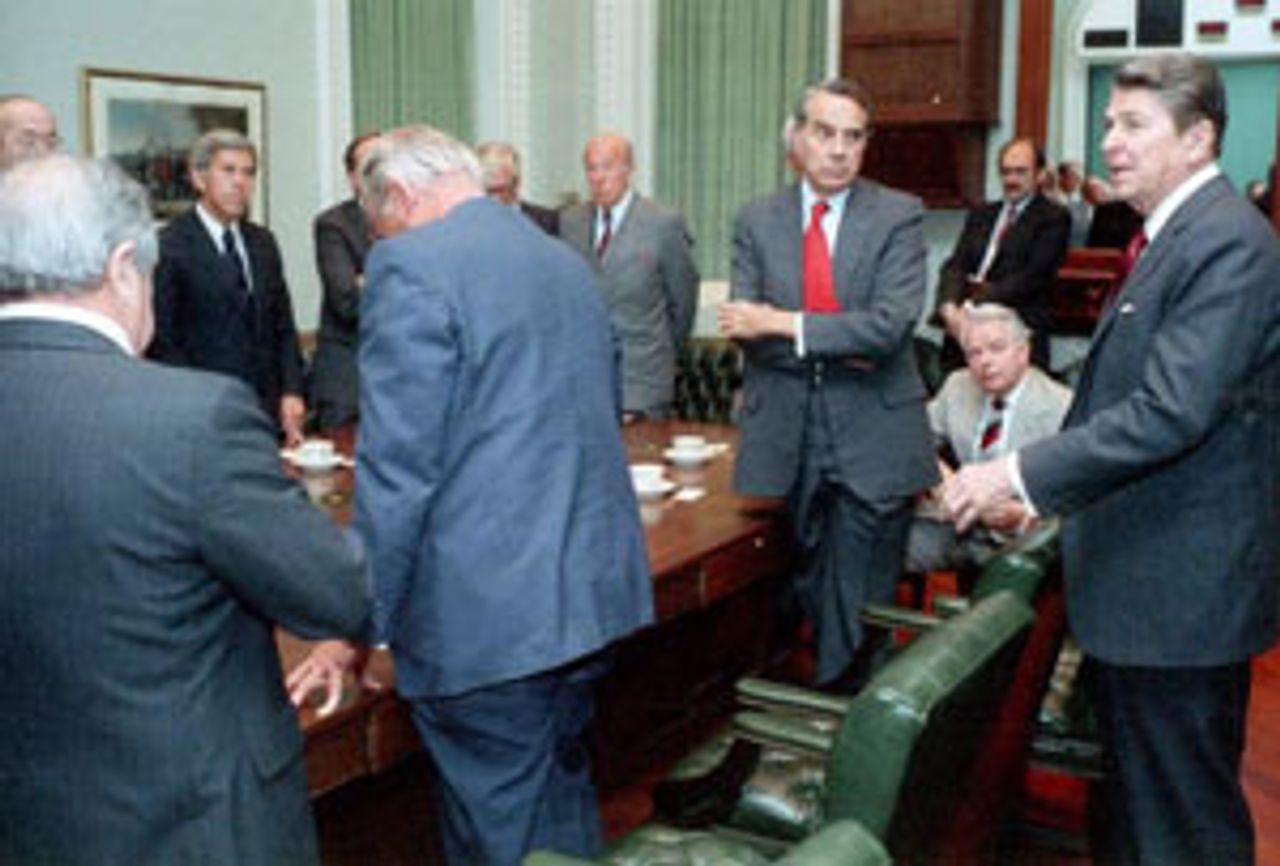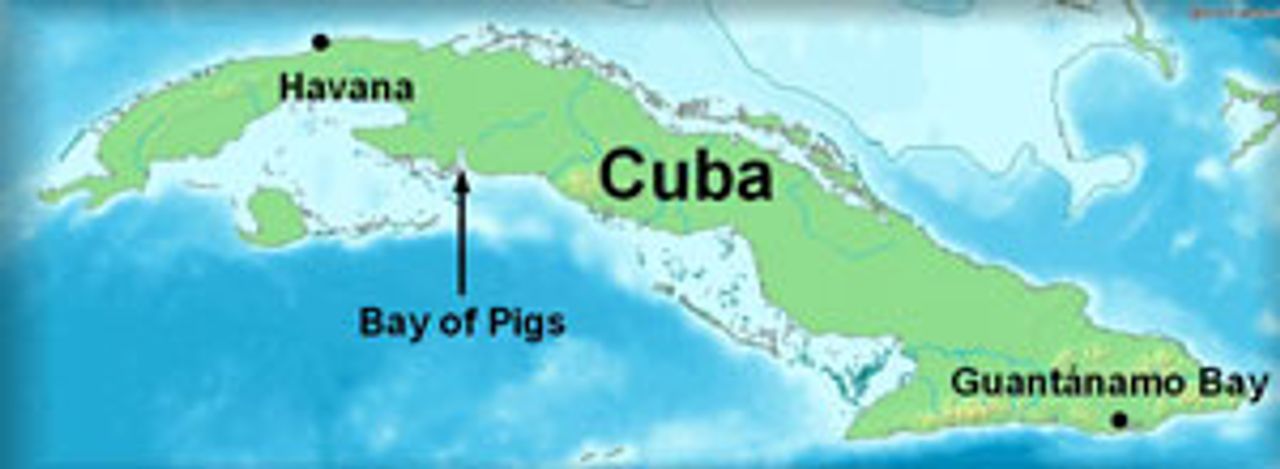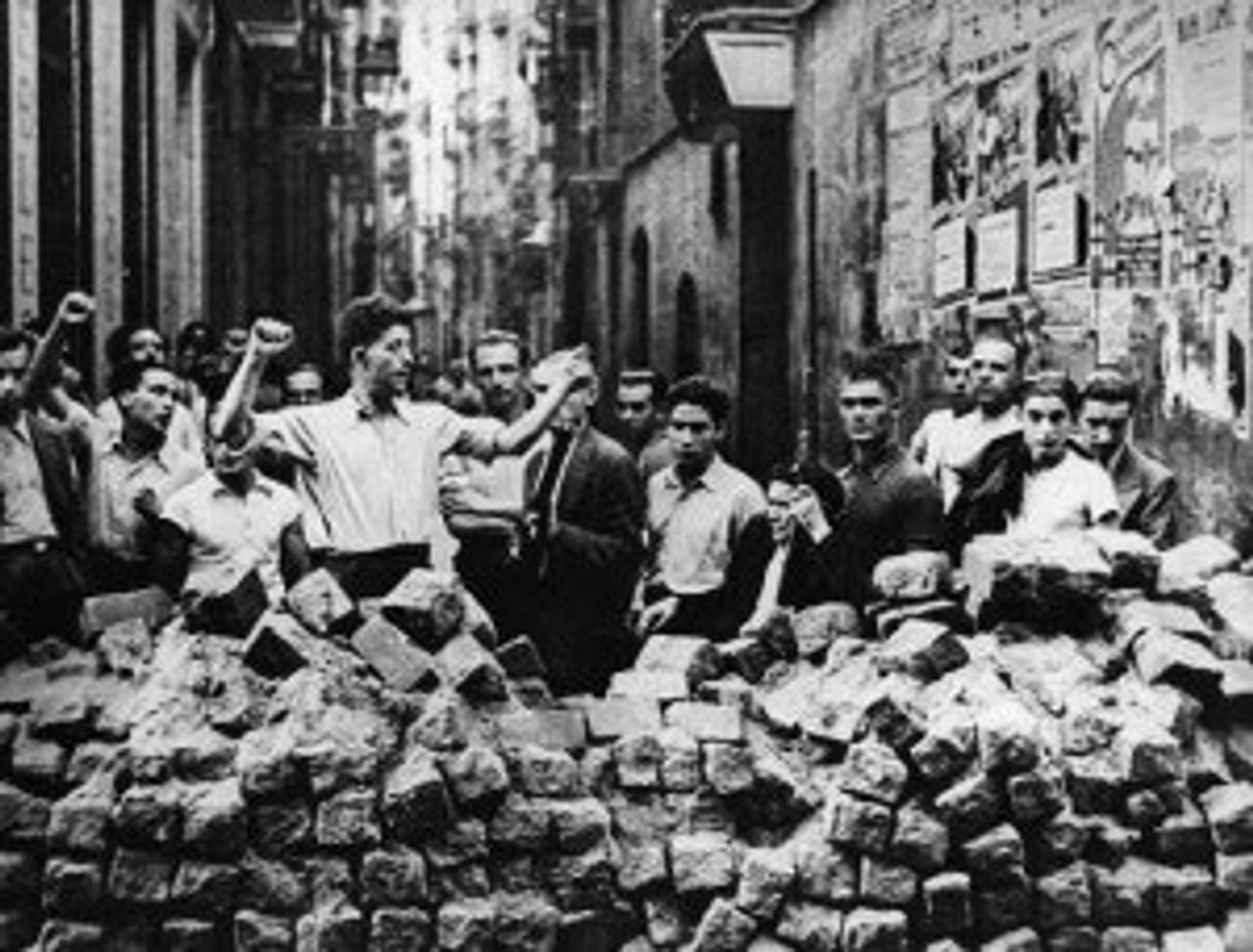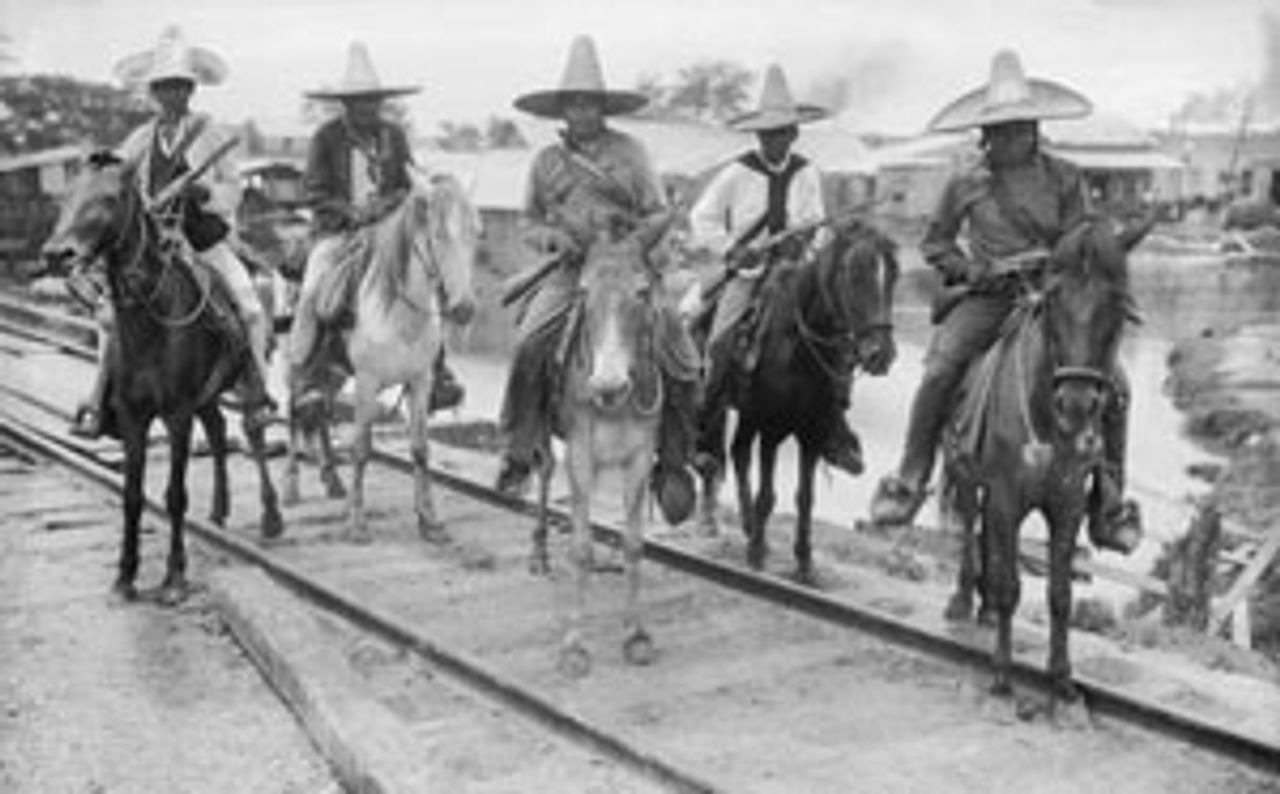This Week in History provides brief synopses of important historical events whose anniversaries fall this week.
25 Years Ago | 50 Years Ago | 75 Years Ago | 100 Years Ago
25 years ago: US bombs Libya
 Reagan White House meeting at launch of attack on Libya
Reagan White House meeting at launch of attack on LibyaOn April 15, 1986, the US launched an aerial blitz on Libya in supposed retaliation for terrorist attacks on US civilians in Europe over the preceding two weeks. Over 100 Libyans were killed in the bombing raids on Tripoli and Benghazi, among them perhaps two dozens civilians, including Gaddafi’s adopted infant daughter. Hundreds of civilians were wounded. Two US pilots died after their F-111 was shot down by Libyan air defenses.
Meant to undermine the regime of Muammar Gaddafi and perhaps kill him, the operation also demonstrated the isolation of the US. Italy refused the use of its military bases or airspace, and it was later documented that Italian Prime Minister Bettino Craxi had alerted Gaddafi of the attack two days before it took place. France—which had itself bombed a Libyan airport in Chad months earlier—refused US aircraft permission to use its airspace, forcing a considerable extension of the route for jets flying from the UK. (The French embassy in Tripoli was “accidentally” bombed in the campaign, dubbed Operation El Dorado Canyon.)
The United Nations later condemned the attack by a vote of 79 in favor and 28 against with 33 abstentions, as a “a violation of the Charter of the United Nations and of international law." The Soviet Union, while formally condemning the attack, had behind the scenes signaled its toleration as a means of currying favor in arms negotiations with the Reagan administration.
Reagan justified the attack on Libya as retaliation for the bombing of a West Berlin disco in which two US soldiers were killed, making the operation the first US attack on an Arab country justified explicitly as a response to terrorism. “When our citizens are attacked or abused anywhere in the world on the direct orders of hostile regimes, we will respond so long as I’m in this office,” Reagan said in a nationally televised address hours after the patently illegal attack took place. Simultaneously, 3,000 miles away in Afghanistan, Washington was arming and training Islamist terrorists fighting against the Soviet-backed regime. These would later produce Al Qaeda.
50 years ago: Bay of Pigs invasion
 A force of right-wing Cuban exiles landed at the Bay of Pigs on Cuba’s southern coast on April 17, 1961. The Bay of Pigs invasion, a US attempt to topple the nationalist regime of Fidel Castro, ended in fiasco and international embarrassment for the Kennedy administration.
A force of right-wing Cuban exiles landed at the Bay of Pigs on Cuba’s southern coast on April 17, 1961. The Bay of Pigs invasion, a US attempt to topple the nationalist regime of Fidel Castro, ended in fiasco and international embarrassment for the Kennedy administration.
About 1,500 exiles, armed and trained by the CIA, took part in the abortive mission at Bahia de Cohcinos (Bay of Pigs), about 100 miles from Havana. Responding quickly, Castro’s tiny air force was able to destroy two ships, and forced the rest of the US-backed flotilla out to sea, effectively stranding the invading force under the guns of much larger Cuban army and militia forces. Within three days the 1,202 Cuban exiles surrendered and were taken prisoner. Cuba lost 176 soldiers in the fighting, the invading force 118.
The invasion was the culmination of a broader plan authorized by Kennedy’s predecessor, President Dwight D. Eisenhower, which also involved figures from American organized crime who would attempt to assassinate Castro. After his inauguration, Kennedy assumed control of the operation, supplying the exiles with bombers altered so as not to appear to be of US origin, and authorizing their use against Cuban airfields on April 15.
The Bay of Pigs had the effect of ending any immediate chance for rapprochement between Cuba and the US. It strengthened Castro’s nationalist and anti-imperialist credentials and increased Cuban dependence on the Soviet Union. After the invasion for the first time Castro declared that the revolution had been “socialist” and “Marxist-Leninist,” although the working class had played no role in the establishment of his regime and each step of Castro’s program of nationalization had been necessitated by hostile economic acts from the US.
In the US, powerful and reactionary elements in the military and intelligence apparatus, as well as among the Cuban exiles and the Mafia, blamed Kennedy for refusing to send in US forces when it was clear the invasion had failed.
75 years ago: Workers on the offensive in Spain
 Workers in Barcelona in 1937
Workers in Barcelona in 1937Workers in Spain this week in 1936 intensified their offensive against both the Republican regime and far-right forces, routing fascists in street battles and carrying out major strikes.
On April 15, general strikes took place in Pamplona and Jerez, taxi cab drivers struck in Madrid, and construction workers struck in Bilbao. In Jerez, a conservative newspaper plant was burnt to the ground and churches and convents were sacked.
On April 16 in Madrid, a funeral procession for a Civil Guard killed the day before, attended by prominent right-wing politicians, was attacked as it passed below working class apartment buildings. Workers opened fire on the procession from sidewalks, windows, and rooftops. Among those killed was the cousin of jailed fascist leader Jose Antonio Primo de Rivera. Bloodshed also took place in Seville and again in Jerez.
Jose Gil Maria Robles, of the monarchist-clerical Spanish Confederation of the Autonomous Right, threatened civil war in response to the working class offensive. He charged the liberal premier, Manuel Azana, with enabling communists. Azana, who ruled with the backing of the Stalinist-led Popular Front, responded by promising to crack down on the working class and by declaring his opposition to communism.
“Bolshevism would be as fatal for me as it would for you,” Azana told the Cortes before winning a vote of confidence April 16. “It is useless to say I am a Communist, for I will do all I can to prevent the establishment of communism in Spain.”
100 years ago: Threat of foreign intervention in Mexican Revolution
 Mexican peasant fighters
Mexican peasant fighters As revolutionary forces loyal to opposition leader Francisco Madero continued to make gains against the Porfirio Diaz regime in Mexico, the US and other powers threatened to intervene more directly.
Fighting spilled over from the Mexican city of Agua Prieta to the US town of Douglas, Arizona, killing and injuring a handful of Americans. Voices in the US media demanded intervention, and the Taft administration warned the Mexican foreign ministry that a repeat would be considered a “national affront.” The US warning was a tactical advantage to the “insurrectos,” who used the border towns as an entry for men and arms.
In the state of Guanajuato, the American superintendent overseeing 21 mines, Joseph McDonald, announced that he had begun to put in place fortifications and could place 1,000 Americans under arms to defend US mineral interests. The region was rich in gold, silver, lead, and copper. Perhaps with such considerations in mind, a Canadian member of parliament, Col. Sam Hughes, charged that the US had strirred up the trouble in Mexico as part of an annexation plot.
The British landed a force of some 30 Marines and a Maxim gun at the Baja California town of San Quentin, and rumors swirled in the US media that Japan was advancing its own interests in the crisis. This incited public discussion of the recent Roosevelt Corollary to the Monroe Doctrine, which admitted the right of foreign powers to intervene militarily in Latin America in order to force payment of debts. The “Roosevelt Doctrine” was assailed by powerful Republican senators Henry Cabot Lodge of Massachusetts and Shelby Cullom of Illinois.
In addition to gaining control of Agua Prieta, the insurrectionary forces reportedly moved with impunity in Guerrero and Morelos south of Mexico City. Cotton mill workers in Atlixtac, Guerrero struck during the week and joined the insurrection.
